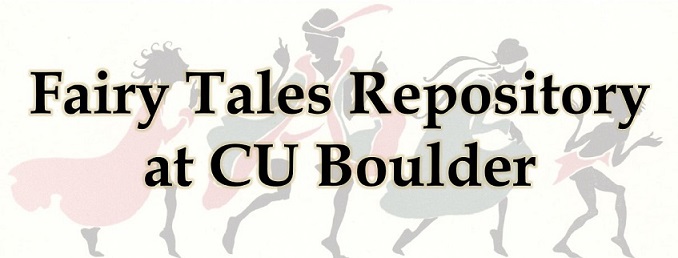Collected Item: “Straparola, Giovanni Francesco. “The Fourth Fable: Tebaldo, Prince of Salerno…” The Nights of Straparola, translated by W.G. Waters and illustrated by F. R. Hughes, London: Lawrence and Bullen, 1894, volume 1, pp. 35-44.”
Full bibliographic citation (MLA)
Straparola, Giovanni Francesco. “The Fourth Fable: Tebaldo, Prince of Salerno…” The Nights of Straparola, translated by W.G. Waters and illustrated by F. R. Hughes, London: Lawrence and Bullen, 1894.
Title of the complete book/anthology (not a single chapter/fairy tale)
The Nights of Straparola
The name of the author or editor of the complete book/anthology (leave blank if none are listed)
Giovanni Francesco Straparola
Illustrator(s) of the book/anthology (leave blank if none are listed)
E. R. Hughes, A. R. W. S.
City where the book/anthology was published
London
The country where the book/anthology was published (use United States for US publications)
England
The publisher of the book/anthology (as written on the title page)
Lawrence and Bullen
Date of publication (or date range from the library catalog, if no dates are listed in the book)
1894
The decade the book was published (use the drop down menu)
1890-1899
The fairy tale type (use the drop down menu)
Persecuted Maidens
What is special about this version of the tale?
This persecuted maiden tale in Straparola’s book of tales is the first fairytale presented, which can be identified by the use of magic food that keeps the princess alive during her time hidden in a chest. This story of Tebaldo and Doralice is narrated by a woman and concludes with justice served to the antagonistic man and a happily ever after for the princess. By this end, evidence of the book’s dedication to women can be seen.
A brief summary of the plot that highlights any unique variations
The widowed Prince Tebaldo promised his late wife he would only remarry a woman who could wear her same ring. Upon discovering this woman was his daughter, he made plans to wed her. The daughter consulted her nurse who helped her escape by hiding her in a chest with magic food that would keep her alive. The prince had the chest sold to a merchant who then sold it to the King of England. The princess spent every day in the King’s palace perfecting his quarters while he was away, and one day the King pretended to leave so he could discover who was the person doing this kind task. He found the princess at work and planned to marry her right away, then they had two children together. Tebaldo, still furious with the princess’s escape, set off to find her and exact his revenge. He made his way to the King’s palace in England and used disguises to convince his daughter, who did not recognize him, to allow him to sleep in a room with her children. After she agreed, Tebaldo stole her knife to kill the children and then planted the bloody knife back on her so she would be accused of the murder. The King had her buried up to her head as to torture her to death, but when Tebaldo went home he explained the situation to the princess’s nurse who then rode to England to set the story straight. The King believed her and had Tebaldo executed, then they all live happily together for many years.
A link to a digital copy of the book
https://archive.org/details/nightsofstraparo01stra/page/34/mode/2up
Your full name (this entry will not appear on the public site)
[private]
